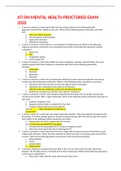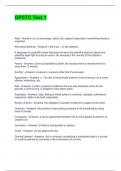Lecture notes
Software Engineering Lecture Notes
- Institution
- The University Of Essex (UoE)
Unit 2: Software Development Methodologies Waterfall Model: Describes a linear and sequential approach to software development. Unified Software Development Process: An iterative approach consisting of four phases: inception, elaboration, construction, and transition. Unit 3: Software Modeling ...
[Show more]










